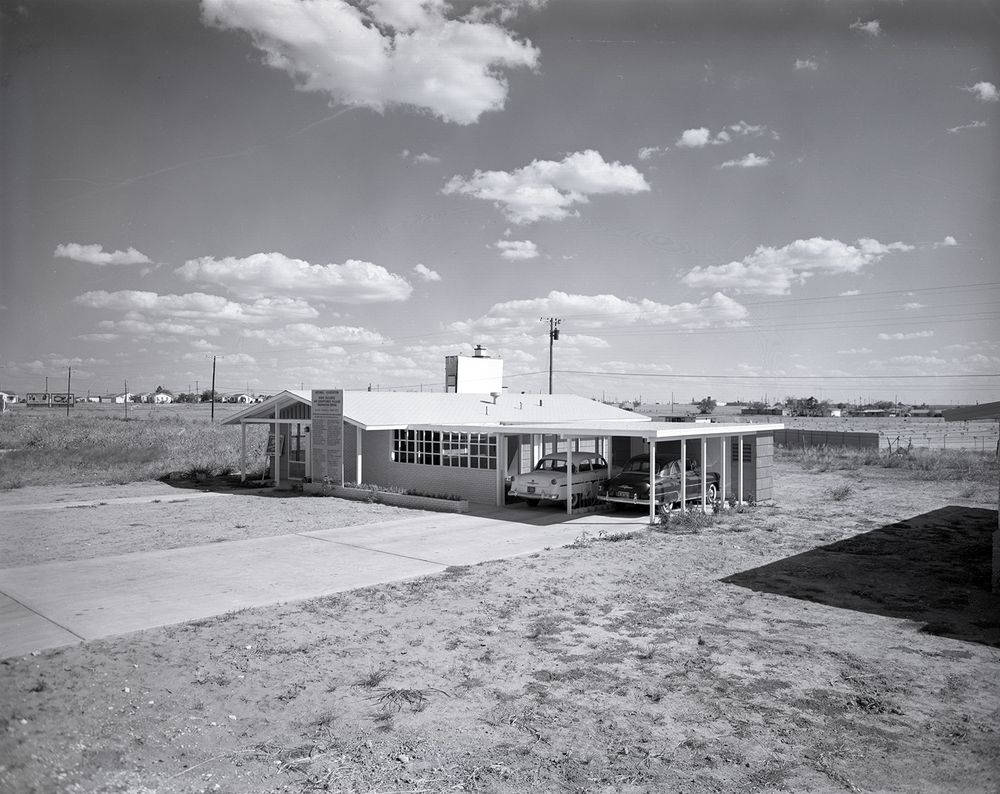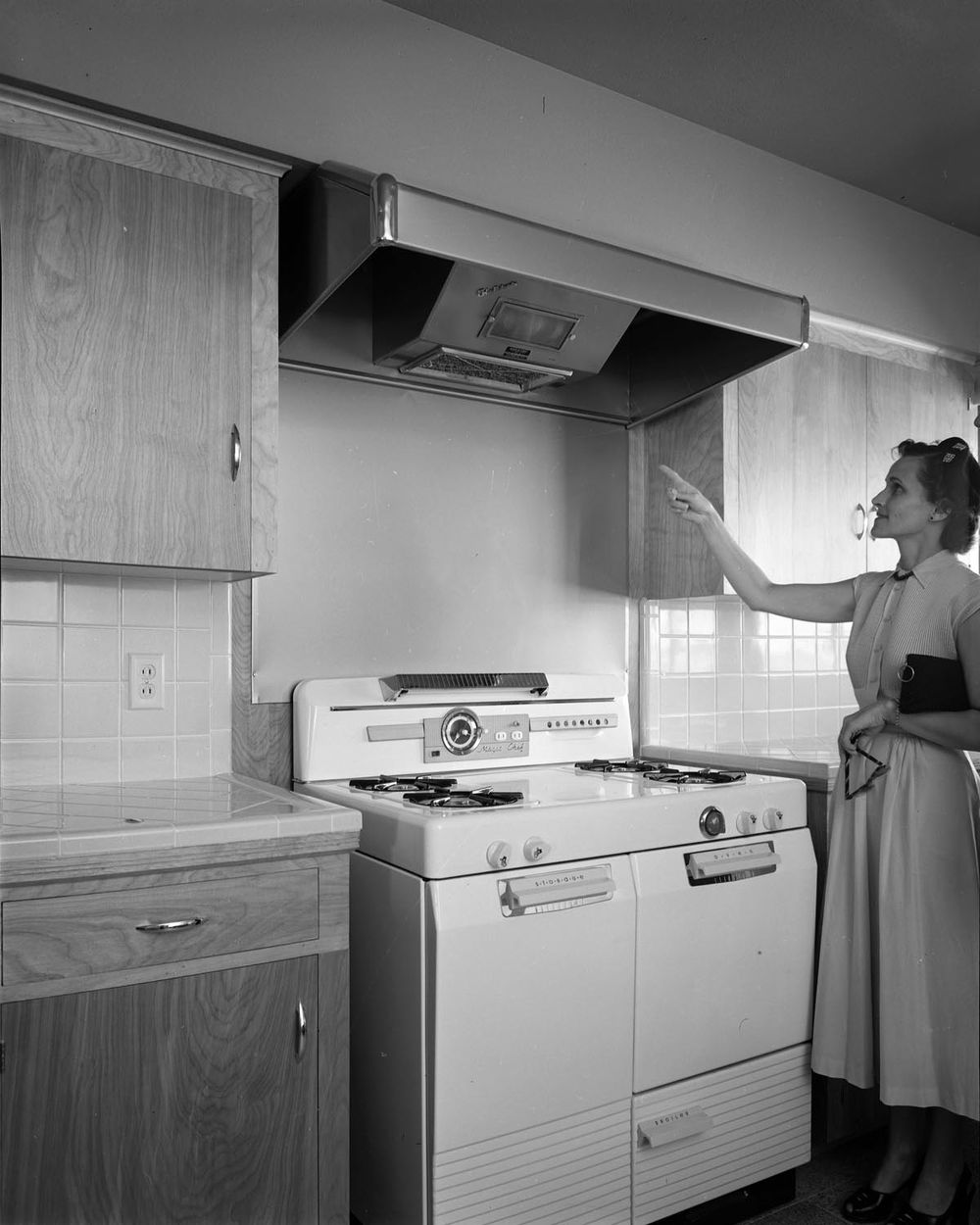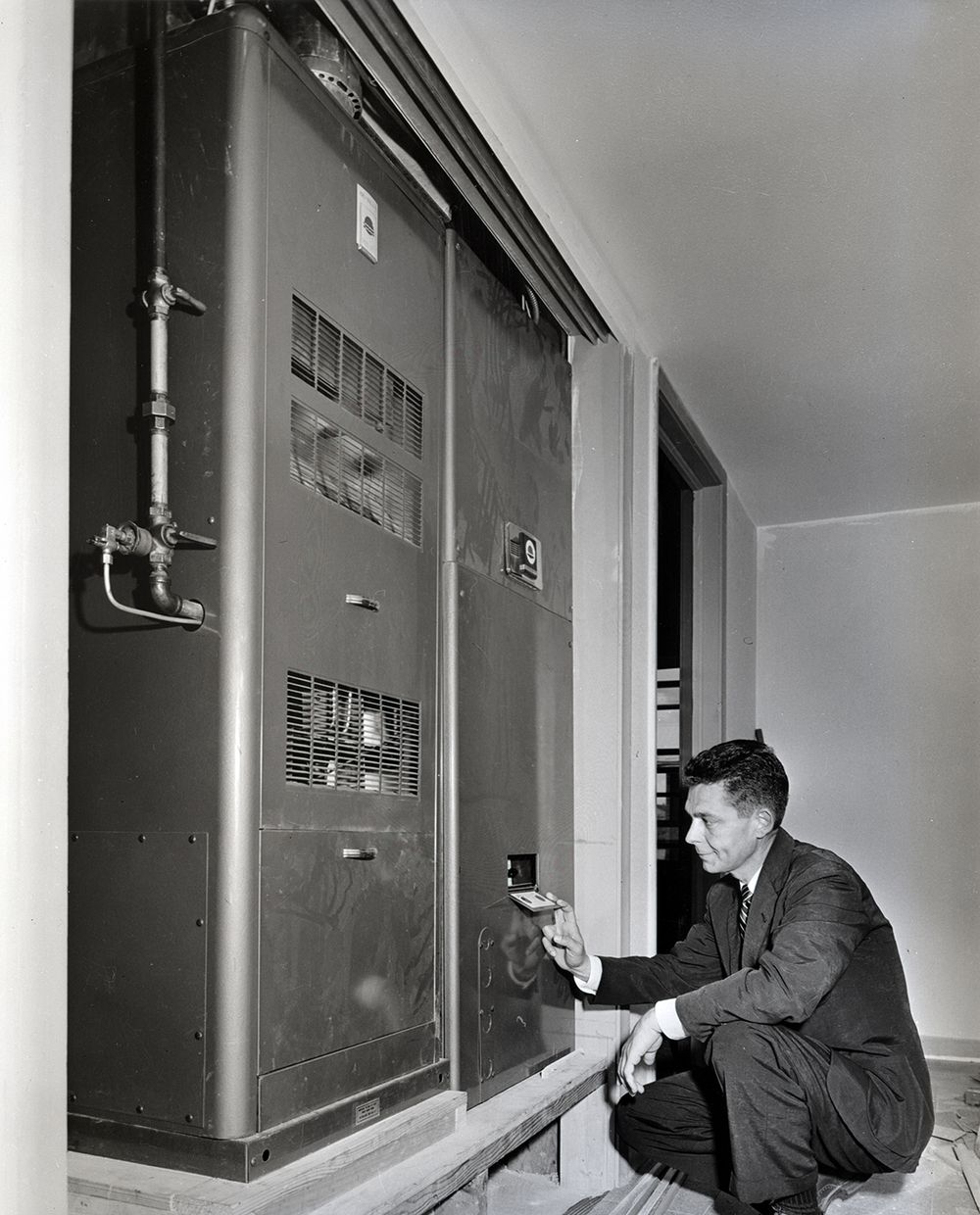Air conditioning is ubiquitous these days, but not too long ago cool air was considered a luxury available only in commercial businesses. This was to change in the 1950s, when the National Association of Home Builders (NAHB) together with the University of Texas at Austin came up with a plan to determine whether it was economically feasible to bring central air conditioning to residential homes. Until then, the only air conditioning solution available for residential use were window units.

One of the first air conditioned houses in Allandale, Texas. Photo: Dewey Mears
NAHB got in touch with a variety of builders and and air conditioning manufacturers and asked them to build a village on the outskirts of Allandale, in Austin, Texas, with 22 different single-story homes, each fitted with a AC manufacturer’s equipment. Each house was approximately 1,400 square feet in size with three bedrooms, one or two bathrooms, and garages. The houses were designed with features that made cooling easier and efficient. For instance, walls and roofs were insulated, the roofs had wide overhangs and extended walls to create more shade, windows were strategically located to avoid strong sun, and kitchens and bathrooms were fitted with ventilation systems.
One of the initial concerns were that the fans would be too noisy. The machines were huge and unsightly, so many builders used low exterior walls to hide them from view. Instead of using metal ducts builders constructed all of the AC ducts using sheetrock hidden into the walls. Indeed, a 1955 article summarizing some of the research results from the Air Conditioned Village project states, “Poor ductwork was … the greatest single headache.”

Aerial view of the air conditioned village. Photo: Dewey Mears
Despite the many unorthodox construction methods, NAHB found no shortage of buyers. The houses were sold to willing families who agreed that researchers could observe various aspects of their home life for one year. Research addressed issues such as electricity usage, effectiveness of insulation, and various energy efficiency issues relating to the design of the houses. After the one-year-long study was over, the NAHB reported that families spent more time at home, slept longer, took on hobbies, improved their appetites, and were generally happy. The women from the Austin Air-Conditioned Village reported less dirt and dust in the house, which in turn allowed the use of previously considered luxuries such as white rugs, curtains, and upholstery.
Soon after the findings were published, the standard definition of the middle-class family would change to include owning a washing machine, a two-car garage, and “central” air conditioning. By 1962, almost 6.5 million homes in the US, 60 percent of hotel rooms, and half of all office buildings were air-conditioned.
Some of the original 22 homes are still standing and occupied, although the original air conditioning units have been replaced by modern ones. These houses tell a fascinating story about how this small section of the Allandale played a pivotal role in bringing indoor air conditioning to the middle-class home.

A woman touring a new home inspects the modern kitchen appliances. Photo: Dewey Mears

A man looks at the A/C unit in one of the homes. Photo: Dewey Mears

Photo: Dewey Mears

Photo: Dewey Mears
References:
# Nicole Davis, Living in an Air Conditioned Village, Austin Public Library
# How Allandale Pioneered Central Air Conditioning, Allandale Neighbor
# Srdjan Jovanovic Weiss, Better Than Weather: The Austin Air-conditioned Village, Cabinet



I live in Oklahoma City, grew up without any AC except a small window unit in our living room that was only used occasionally and a regularly used attic fan for summer heat. I don't think I could tolerate our weather now without central heat and air, especially as humid as it can get at times. I have lived in places where most homes didn't have AC or even need it, coastal areas. I've also lived in scrubby, arid desert areas where it was absolutely miserable without it. Frankly, it's a great invention and makes staying in the house far more pleasant!
ReplyDeleteI also grew up without A/C, started using it when I moved to New Orleans, but even there didn’t turn it on until mid-summer. Now living in the desert, I quit using it again. I never really feel the need, except in a car, just because speeds are so high now on the interstate, open car windows are literally deafening. “It’s a dry heat.”
ReplyDelete